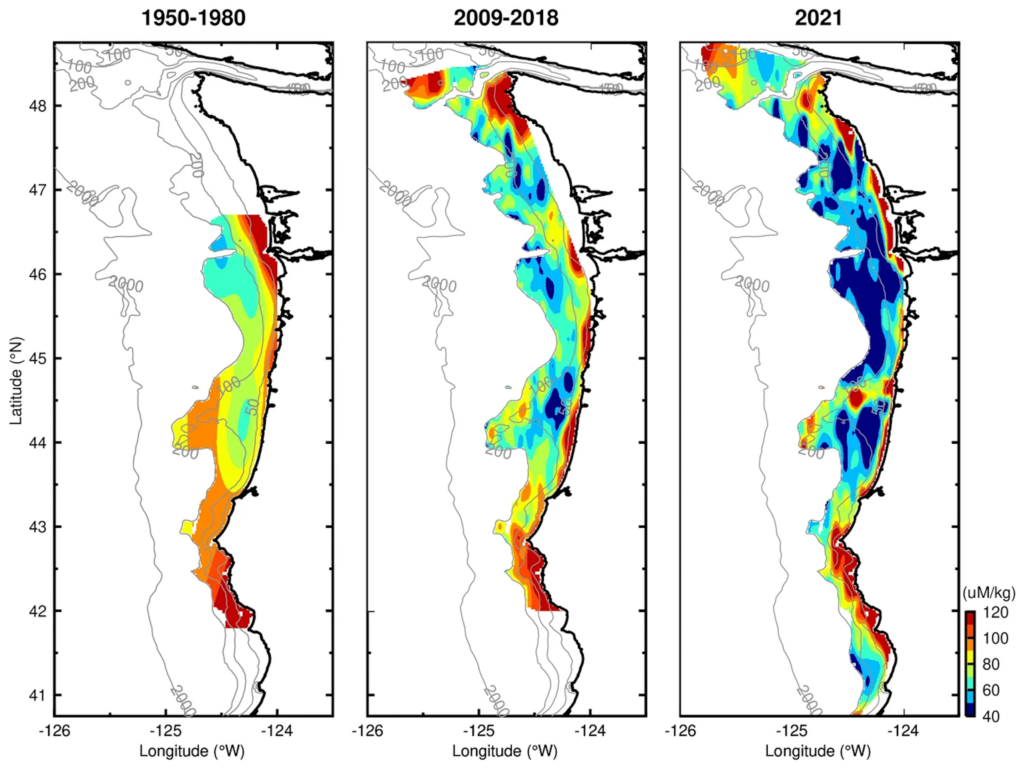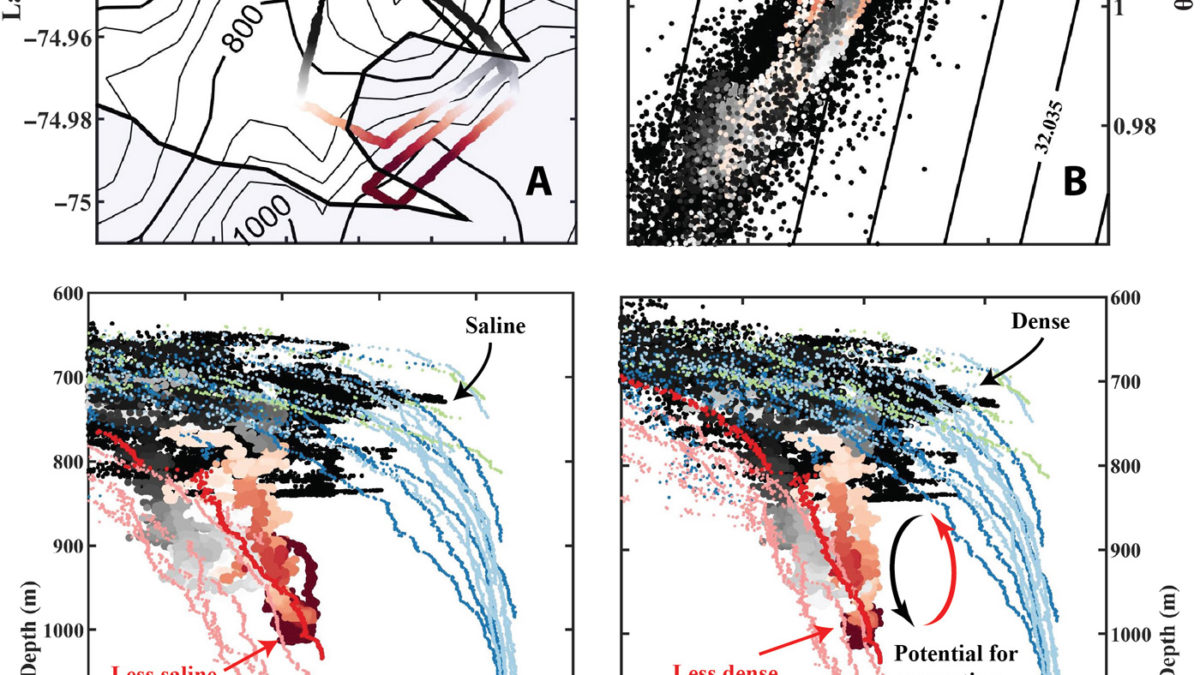Pacific Northwest coast suffers from low oxygen, study finds – “As we keep changing the climate, it’s going to become the norm. What’s pretty remarkable is that 50 percent of the continental shelf is going to be low oxygen.”

By Amanda Zhou
10 June 2024
(The Seattle Times) – About half of the water near the seafloor off the Pacific Northwest coast experienced low-oxygen conditions in 2021, according to a new study.
And those hypoxic conditions, which are expected to become common with global warming, threaten the food web, the study found.
The study from Oregon State University, published in Nature Scientific Reports, used data from 2021 to map out oxygen levels across the bottom 32 feet of the Pacific Northwest continental shelf.
The research illuminates how the planet’s warming has fundamentally changed the ocean’s annual cycles and ecosystems, endangering culturally and economically valuable species like the Dungeness crab, which was worth an annual average of $45 million from 2014 and 2019.
The study examined oxygen levels during the 2021 “upwelling season,” when water from ocean depths, rich in nutrients but low in oxygen, churns through the coastline because of changes to wind patterns between spring and early fall.
During this time, the study found, nearly half of the ocean bottom on the continental shelf had oxygen at levels that would stress or kill fish and crabs.
This area serves as habitat for fisheries like Dungeness, petrale sole and lingcod but also worms and anemones that are crucial parts of the food web, said Jack Barth, the study’s lead author and executive director of OSU’s Marine Studies Initiative. Marine animals need oxygen to live and in recent years, fishers have reported hoisting up dead or suffocating crabs in their pots and piles of dead Dungeness have washed ashore on the Olympic coast.
The study also found that the amount of hypoxic water off the Pacific Northwest coast during the ocean’s “upwelling season” has increased compared with measurements from 1950 to 1980 when low-oxygen conditions were relatively absent at 2% and from 2009 to 2018 when only 24% of the bottom of the continental shelf was hypoxic.
“The only way we change this is to do our best to turn around climate change, which is less CO2 emissions,” Barth said. “We can’t take an egg beater out there and mix oxygen into the ocean.”
Coastal waters off the Pacific Northwest rely on winds switching direction to mix well-oxygenated surface water with nutrient-rich, low-oxygen water from the deep. Historically during the warmer months, the Pacific Northwest has experienced both north- and southbound winds from the wobbling jet stream above, resulting in a healthy balance of both nutrients and oxygen.

However, due to increased warming and a larger difference between the land and ocean temperature, winds between spring and early fall have started to shift consistently toward the south, resulting in large areas of low oxygen, Barth said. Water near the bottom of the ocean also tends to lose more oxygen during the warm months as organic matter sinks and decays.
What has further complicated this mixing of oxygen, Barth said, is that a warmer surface layer of the ocean has also insulated the oxygen in the atmosphere from reaching the deeper waters.
“We’re sort of putting a blanket over the ocean and that just makes it harder to flush the water in and out,” he said.
The effects of warming are felt most when nutrients from the deep waters fuel plankton and algae growth at the base of the food web during the warmer months, Barth said. During the winter months, strong winds from different directions reset the oxygen throughout the water column, he said.
The ocean’s “upwelling season” between early spring and fall in 2021 was “particularly bad,” Barth said, with the second-highest amount of upwelling in the last 35 years. The following two years have been less extreme but the conditions observed in 2021 are expected to become routine by 2050, he said.
“As we keep changing the climate, it’s going to become the norm. That’s what’s pretty remarkable is that 50% of the continental shelf is going to be low oxygen,” Barth said.
Maps produced by the researchers will help guide sustainable fishing and could be used to site offshore wind farms away from fisheries with high levels of oxygen, he said.
PNW coast suffers from low oxygen, study finds. It’s becoming the norm
Widespread and increasing near-bottom hypoxia in the coastal ocean off the United States Pacific Northwest
ABSTRACT: The 2021 summer upwelling season off the United States Pacific Northwest coast was unusually strong leading to widespread near-bottom, low-oxygen waters. During summer 2021, an unprecedented number of ship- and underwater glider-based measurements of dissolved oxygen were made in this region. Near-bottom hypoxia, that is dissolved oxygen less than 61 µmol kg−1 and harmful to marine animals, was observed over nearly half of the continental shelf inshore of the 200-m isobath, covering 15,500 square kilometers. A mid-shelf ribbon with near-bottom, dissolved oxygen less than 50 µmol kg−1 extended for 450 km off north-central Oregon and Washington. Spatial patterns in near-bottom oxygen are related to the continental shelf width and other features of the region. Maps of near-bottom oxygen since 1950 show a consistent trend toward lower oxygen levels over time. The fraction of near-bottom water inshore of the 200-m isobath that is hypoxic on average during the summer upwelling season increases over time from nearly absent (2%) in 1950–1980, to 24% in 2009–2018, compared with 56% during the anomalously strong upwelling conditions in 2021. Widespread and increasing near-bottom hypoxia is consistent with increased upwelling-favorable wind forcing under climate change.


